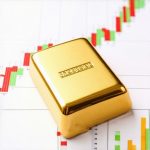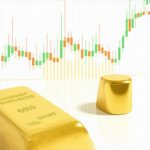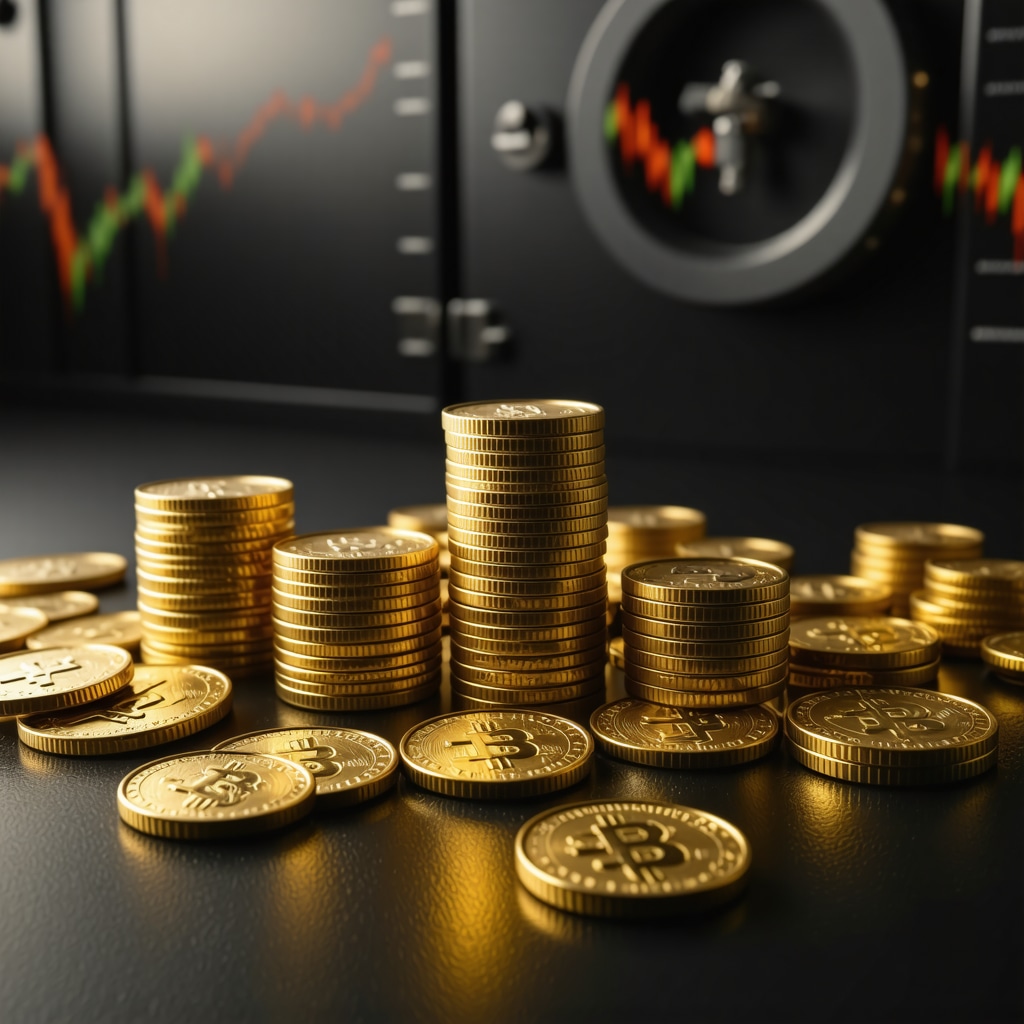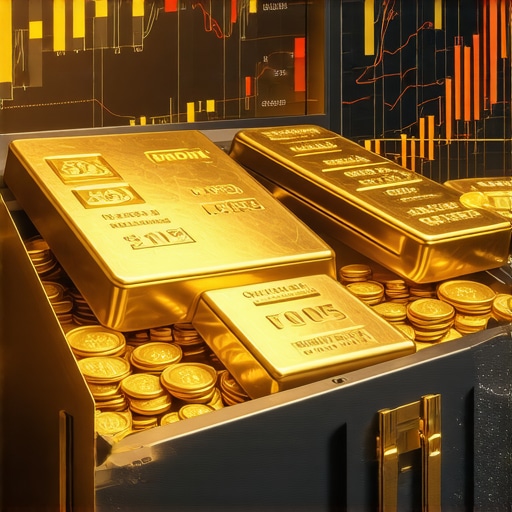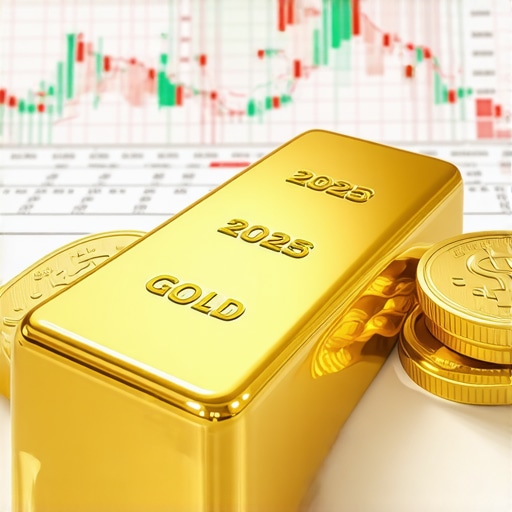Unlocking the Future of Wealth Security: The Expert’s Guide to Gold Investments in 2025
As financial landscapes become increasingly complex and volatile, investors seeking resilient assets are turning their focus toward precious metals, particularly gold. With the anticipated macroeconomic shifts and geopolitical uncertainties in 2025, understanding the nuanced roles of gold coins, bullion, and ETFs is essential for sophisticated portfolio diversification. This guide synthesizes expert insights, advanced market analysis, and strategic considerations to help investors navigate gold investment opportunities effectively.
Why Gold Remains the Cornerstone of Wealth Preservation in 2025
Historically, gold has served as a hedge against inflation, currency devaluation, and systemic financial crises. In 2025, ongoing inflationary pressures, coupled with evolving monetary policies, reinforce gold’s position as a safe-haven asset. Its unique intrinsic value, liquidity, and global acceptance render it indispensable in a diversified investment strategy. Learn more about using gold as an inflation hedge.
Dissecting the Most Promising Gold Coins and Bullion for 2025
What are the most strategic gold coins and bullion options for wealth security?
Expert analysis suggests that selecting high-purity, government-minted coins like the American Gold Eagle, Canadian Gold Maple Leaf, and South African Krugerrand offers optimal liquidity and recognition. Additionally, investment-grade gold bars, especially those with standardized weights such as 1 oz or 100 g, provide cost efficiency and ease of trade. The supply-demand dynamics and industry trends indicate a growing preference for these tangible assets, especially during periods of market turbulence.
ETFs and Mutual Funds: The Sophisticated Investor’s Choice in 2025
Gold ETFs and mutual funds offer liquidity and diversification, allowing investors to gain exposure without the logistical challenges of physical gold. Notably, top-performing ETFs such as SPDR Gold Shares (GLD) and iShares Gold Trust (IAU) are favored for their transparency and low expense ratios. For strategic growth, investors should explore expert tips on selecting the best gold ETFs and mutual funds.
Expert Strategies for Navigating Gold Price Drivers in 2025
Price drivers include macroeconomic factors such as inflation rates, central bank policies, and geopolitical tensions. Analyzing supply-demand dynamics, especially in the jewelry industry and gold mining sector, offers insights into future price movements. For instance, increased central bank gold purchases may signal rising confidence in gold’s value, influencing prices significantly. Refer to top market analysis trends for 2025.
What complex factors will influence gold prices in 2025?
Understanding the interplay of economic policies, currency stability, and global demand is crucial. Moreover, technological advancements in gold mining and increased institutional allocations could reshape supply chains. Staying informed through credible sources like the World Gold Council enhances strategic decision-making.
For those looking to deepen their expertise, exploring ultimate tips for gold ETF and mutual fund investing is highly recommended. Sharing insights with fellow investors and contributing to expert discussions can refine your approach for 2025 and beyond.
Investors must consider these factors within a broader, risk-managed framework, aligning their gold investments with long-term wealth preservation goals. As the landscape evolves, continuous education and strategic agility will be paramount to capitalizing on gold’s enduring value.
Unlocking the Power of Gold Supply and Demand Dynamics in 2025
As investors delve deeper into gold markets, understanding the intricate supply and demand factors becomes crucial. Industry shifts, technological advancements in mining, and geopolitical influences can significantly alter gold’s price trajectory. For example, increased central bank gold acquisitions, driven by strategic reserve diversification, may tighten supply and elevate prices. Meanwhile, rising demand in emerging markets, particularly within jewelry and technology sectors, continues to bolster gold’s intrinsic value. To navigate these complexities, consider consulting comprehensive supply-demand analyses for 2025.
What Are the Hidden Factors Shaping Gold’s Price in 2025?
Beyond the obvious macroeconomic indicators, subtle influences such as technological innovation in gold extraction, environmental regulations, and shifts in investor sentiment can sway prices unexpectedly. For instance, breakthroughs in sustainable mining could lower production costs, boosting supply and moderating price increases. Conversely, geopolitical tensions can trigger safe-haven flows, rapidly inflating gold’s value. Staying informed through resources like the world gold market outlook enhances strategic foresight.
How can investors leverage expert market analysis to optimize their gold portfolio in 2025?
Utilizing advanced market analysis tools—such as technical charting combined with fundamental supply-demand insights—can significantly improve timing and entry points. For example, integrating market trend indicators with geopolitical risk assessments enables a nuanced approach to trading gold futures or ETFs. Additionally, engaging with industry reports from trusted institutions like the World Gold Council provides a macro perspective that informs tactical decisions, ensuring your portfolio remains resilient amid volatility.
For those seeking to deepen their expertise, exploring expert guidance on gold ETF and mutual fund strategies can unlock new avenues for growth. Sharing insights through community discussions or expert forums can refine your approach and adapt to evolving market conditions.
Remember, aligning your investment strategies with emerging trends—such as technological innovations in gold mining or shifts in global monetary policies—can position you for optimal returns. Continuous education and agile tactics are indispensable in mastering the complexities of gold investment in 2025.
Deciphering the Intricate Interplay of Geopolitical Events and Gold Price Volatility in 2025
As global tensions escalate and geopolitical uncertainties persist, investors must understand how events such as regional conflicts, trade disputes, and diplomatic shifts influence gold prices. The geopolitical landscape acts as a catalyst for safe-haven demand, often triggering rapid price fluctuations. According to a comprehensive report by the World Gold Council (2024), heightened geopolitical tensions in key regions have historically led to increased gold inflows, with prices spiking by an average of 8% during periods of conflict escalation. To navigate these turbulent waters, investors should monitor real-time geopolitical risk indices and incorporate scenario analysis into their strategic planning.
Applying Quantitative Analysis and Machine Learning to Gold Price Forecasting in 2025
Emerging technologies such as machine learning and big data analytics are transforming how investors forecast gold trends. By leveraging advanced algorithms, investors can identify subtle patterns and predictive signals that traditional analysis might overlook. For example, neural network models trained on macroeconomic indicators, currency fluctuations, and mining outputs can generate probabilistic forecasts with higher accuracy. Industry insiders recommend integrating these models with fundamental analysis to enhance decision-making, especially when markets exhibit non-linear behaviors or abrupt shifts.
How can sophisticated quantitative models improve gold investment strategies amid market volatility?
Expert consensus suggests that combining quantitative forecasts with real-time news sentiment analysis enables a more dynamic response to market changes. Studies published in the Journal of Financial Data Science (2023) demonstrate that multi-factor models incorporating sentiment indicators outperform traditional models in predicting short-term price movements. For investors, deploying such tools through algorithmic trading platforms can offer a competitive edge, minimizing emotional biases and optimizing entry and exit points during volatile periods.
Integrating ESG Factors and Ethical Considerations into Gold Investment Portfolios in 2025
Environmental, Social, and Governance (ESG) criteria are increasingly shaping investment decisions. In the gold sector, sustainable mining practices and ethical sourcing have become pivotal, influencing both market perception and pricing. Industry leaders like the Responsible Gold Mining Principles emphasize transparency and environmental stewardship, encouraging investors to prioritize ESG-compliant assets. Incorporating ESG metrics into valuation models can also enhance portfolio resilience, aligning wealth preservation with social responsibility. Notably, ESG-focused gold ETFs and mutual funds are gaining popularity, offering diversified exposure with a conscience.
What advanced techniques can investors employ to assess and incorporate ESG factors into gold investments?
Utilizing third-party ESG ratings combined with blockchain-based traceability systems can provide verifiable insights into the provenance of gold assets. Furthermore, integrating ESG scoring into quantitative models allows for risk-adjusted performance analysis. To deepen expertise, investors should explore resources such as the Responsible Gold Mining Principles and consider engaging with industry forums dedicated to sustainable investing. This holistic approach ensures that gold investments not only preserve wealth but also promote positive societal impact.
As the landscape of gold investment in 2025 continues to evolve, staying abreast of technological innovations, geopolitical developments, and ESG trends is paramount. Advanced analysis, coupled with a forward-looking mindset, can empower investors to capitalize on emerging opportunities while mitigating complex risks. For ongoing insights and tailored strategies, consider consulting with specialized financial advisors and industry experts committed to navigating the sophisticated gold market.
Decoding the Impact of Digital Innovation on Gold Trading Ecosystems in 2025
As the financial ecosystem integrates blockchain technology and digital assets, gold trading is experiencing a paradigm shift. Digital gold, tokenized assets, and blockchain-based authentication systems are revolutionizing provenance verification and liquidity management. According to the World Gold Council (2024), the adoption of blockchain in gold transactions enhances transparency and reduces counterparty risks, fostering investor confidence. Exploring these technological advancements is vital for sophisticated investors aiming to capitalize on market efficiencies.
How Can Artificial Intelligence Transform Gold Market Predictions?
Advanced AI algorithms, including machine learning and deep neural networks, are increasingly pivotal in deciphering complex market signals. These tools analyze vast datasets—from macroeconomic indicators to sentiment analysis—enabling real-time, high-precision forecasts. Industry leaders recommend integrating AI-driven analytics with traditional fundamental analysis to refine timing strategies, especially in volatile environments. For example, predictive models that incorporate geopolitical risk metrics can preempt sudden price swings, offering a strategic advantage.
What are the best practices for leveraging AI in gold investment portfolios?
Experts suggest deploying multi-layered AI models that combine quantitative data with qualitative inputs such as news sentiment and social media trends. Combining these insights with scenario planning allows investors to develop resilient strategies against unforeseen shocks. Institutions like McKinsey & Company emphasize the importance of continuous model validation and adaptive learning to maintain predictive accuracy amidst evolving market conditions.
The Role of Global Monetary Policy Shifts in Shaping Gold’s Future in 2025
Central banks’ monetary policy adjustments—particularly interest rate changes and quantitative easing programs—are critical determinants of gold prices. As global economies navigate inflationary pressures and currency stability concerns, strategic reserve management becomes increasingly influential. The International Monetary Fund highlights how coordinated policy responses can either bolster or suppress gold demand, depending on market perceptions of economic stability.
How can investors interpret central bank signals to optimize gold allocations?
By monitoring central bank gold reserve reports, interest rate forecasts, and macroeconomic policy statements, investors can identify emerging trends. Utilizing econometric models to quantify policy impacts enables proactive portfolio adjustments. Staying informed through dedicated financial analysis platforms ensures alignment with macroeconomic shifts, thereby safeguarding wealth in uncertain times.
Integrating ESG and Ethical Investing into Gold Asset Selection in 2025
The rising prominence of ESG considerations shapes the demand and valuation of gold assets. Sustainable mining practices, transparent supply chains, and ethical sourcing are increasingly scrutinized by investors. Certification standards like the Responsible Gold Mining Principles serve as benchmarks for ESG-compliant assets. Incorporating ESG scores into valuation models not only enhances risk management but also aligns investments with societal values, fostering long-term sustainability.
What innovative methods are used to verify ESG compliance in gold sourcing?
Blockchain-enabled traceability systems, third-party audits, and real-time ESG rating platforms provide verifiable insights into gold provenance. These technological solutions facilitate transparent supply chains and enable investors to make ethically informed decisions. For comprehensive understanding, consulting resources such as the Responsible Gold Mining Principles is highly recommended.
Stay abreast of these emerging trends and technological innovations to refine your gold investment strategy in 2025. Embracing a multidisciplinary approach—combining AI analytics, geopolitical insights, and ESG principles—can significantly enhance your capacity to navigate the complex landscape of precious metals investing. Engage with industry experts, participate in specialized forums, and continuously evolve your knowledge base to maintain a competitive edge.
Expert Insights & Advanced Considerations
1. Embrace Technological Innovation
Utilize cutting-edge tools such as AI-driven market analysis and blockchain authentication to gain a competitive edge in gold trading. Staying ahead with these technologies enhances decision-making precision and security.
2. Monitor Geopolitical Dynamics
Constantly analyze geopolitical risks and their influence on gold prices. Events like regional conflicts or trade disputes can trigger significant safe-haven demand, making timely response crucial.
3. Integrate ESG Factors
Prioritize ESG-compliant gold assets. Sustainable mining practices and transparent supply chains not only align with ethical standards but also impact market valuation positively.
4. Leverage Quantitative Models
Apply machine learning and big data analytics for predictive insights. Combining these models with fundamental analysis improves market timing and risk management strategies.
5. Stay Educated and Connected
Engage with industry forums, subscribe to authoritative reports, and consult with experts regularly to refine your investment approach amid evolving market conditions.
Curated Expert Resources
- World Gold Council: Offers comprehensive market reports and trend analyses that keep investors informed on global gold dynamics.
- Responsible Gold Mining Principles: Provides guidelines and certification standards for ESG-compliant gold sourcing, essential for ethical investing.
- McKinsey & Company: Delivers strategic insights and research on financial markets and technological advancements impacting gold investments.
- Journal of Financial Data Science: Publishes innovative research on quantitative models and AI applications in market forecasting.
- International Monetary Fund (IMF): Supplies macroeconomic data and policy analysis critical for interpreting monetary influences on gold prices.
Final Expert Perspective
In 2025, mastering the complex landscape of gold investment requires integrating technological innovation, geopolitical awareness, and ethical considerations. Advanced analysis techniques and authoritative resources empower investors to make informed, strategic decisions that safeguard wealth and capitalize on emerging market opportunities. For a deeper dive, explore our comprehensive guides and stay connected with industry leaders to maintain your competitive edge in the evolving gold market.
